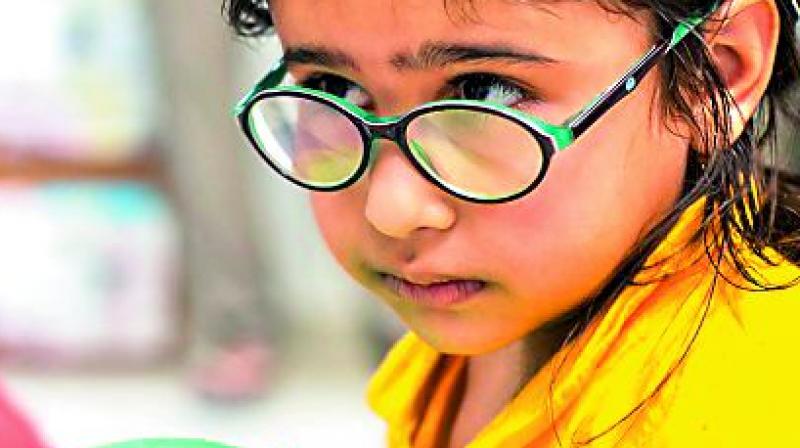Cataract among kids is quite common in India
Detection usually occurs when the child starts going to school.

Hyderabad: Paediatric cataract is detected only when children start pre-school or primary school and it becomes obvious that they are not able to see clearly.
This makes it one of the most undetected of diseases and is the reason that childhood blindness is so common in India.
It is found to affect 15 out of every 10,000 births in India. Childhood cataract is due to infections contracted during pregnancy, congenital defects, and also development defects.
India has 2,80,000 to 3,20,000 visually impaired children, and childhood cataract accounts for nearly 14 per cent of the cases.
Early detection is important to ensure restoration of sight. Ophthalmologist Dr Atul Gupta says that “detection occurs only in government eye screening camps or when the child is in school. We have very few cases where alert parents have come to the clinic saying that the child is squinting or the movement of one eye is not as desired. Eye screening for children must be carried out during the vaccination procedure as that would help faster detection.”
There are two types of paediatric cataract — congenital and developmental. Congenital cataracts occur when during pregnancy the mother contracts infections such as measles or rubella. It could also be due to nutritional deficiency, metabolic disorders, gestational diabetes or drug reactions in the mother.
“The symptoms of childhood cataract vary from child to child,” says ophthalmologist Ravindra Goud. “Some of them present with cloudy lens in either one or both eyes. In these children, in the black of the eye a white dot is visible. This is easily detected by parents and they come to the hospital for treatment. In others, there is blurred vision, seeing halos around light, fading or yellowing of colours, sensitivity to light and also rapid and uncontrolled eye movements.
These cataracts can cause irreversible blindness in the eye. Delayed diagnosis also leads to the development of ‘lazy eye’. In most of those who have cataract in one eye, the other eye is often over stressed.”
When the cataract is not detected early, it carries into the teenage years. Around 7,000 to 9,000 cases of childhood cataract are detected every year, of which 3,000 to 4,000 cases are seen by LV Prasad Eye Hospital.
Dr Ramesh Kekunnaya, consultant and head of paediatric ophthalmology at LV Prasad Eye Institute, explained, “It is easy to detect with a red reflex test where the whitish reflex in the papillary are seen. Surgery can be done to prevent blindness but it is important to have a lifelong follow up. There have been more than 30,000 surgeries performed at LVPEI.”

